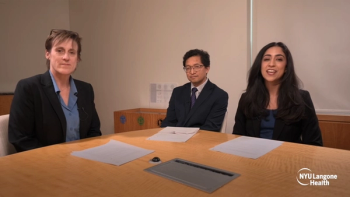
- Ophthalmology Times: August 2020
- Volume 45
- Issue 13
Physicians’ treatment decisions are reinforced with good data
Research results can help ophthalmologists treating patients with macular edema
This article was reviewed by Dilraj S. Grewal, MD
The best-corrected visual acuity (BCVA) and the central subfield thickness (CST) were moderately negatively correlated in patients with macular edema (ME) resulting from retinal vein occlusion (RVO),
Related:
“In clinical practice, treatment decisions for ME are often based on assessments of the BCVA and the findings on optical coherence tomography [OCT], including CST and presence of fluid. The majority of retina specialists worldwide rely on OCT-guided variable-frequency treatment protocols to treat ME,” said Dilraj S. Grewal, MD, who emphasized the importance of having reliable data to guide decision-making.
Grewal is an associate professor of ophthalmology at Duke Eye Center and director of grading at the Duke Reading Center, both in Durham, North Carolina.
Considering the importance of the impact of ME on BCVA, Grewal and Thomas Ciulla, MD, MBA, chief medical officer and chief development officer at Clearside Biomedical in Alpharetta, Georgia, conducted a post hoc analysis to demonstrate the structure-function correlations between the BCVA and the CST in patients with ME in the 3 disease states: DME, RVO, and NIU.
Related:
The authors accessed data from 6 high-quality clinical trials: 4 randomized controlled clinical trials and 2 open-label uncontrolled clinical trials that assessed the use of suprachoroidal triamcinolone administered as monotherapy or with an anti-VEGF drug, Grewal said.
A total of 1063 patients were included in the post hoc analysis.
The investigators assessed the relationships between the BCVA and the CST at baseline and at week 24 to determine the changes from baseline.
They also performed analyses of pooled data from the 3 disease states as well as separately.
Results
Grewal reported that in 774 eyes with RVO that were enrolled in the Sapphire and Topaz studies, a moderate negative relationship was seen between the BCVA and the CST at baseline and for the change from baseline at week 24 (P < .001 for both comparisons).
In 91 eyes with DME that were in the HULK and TYBEE studies, the pooled data from those studies showed a moderate negative correlation between the BCVA and the CST at baseline (P < .001) as well as for the change from baseline at week 24 (P = .006).
Related:
For 198 eyes with NIU, the data from the PEACHTREE and AZALEA phase 3 clinical studies showed a moderate negative correlation between the BCVA and the CST at the 2 points (P < .001 for both comparisons).
“Using the clinical trial data obtained from more than 1000 eyes, this analysis demonstrated moderate negative correlations between the BCVA and CST for the 3 disease states both at baseline as well as for change at week 24,” Grewal concluded. “These data amplify findings from previous studies that looked at structure-function correlations and show that the CST may provide the clinician with context for making clinical decisions and visual recovery in these disease states.”
---
Dilraj S. Grewal, MD
e:[email protected]
Grewal is a consultant to EyePoint and Allergan.
Articles in this issue
over 5 years ago
Artificial tears offer a path to contact lens comfortover 5 years ago
Experts review state of AMD in 2020over 5 years ago
An ophthalmologist faces down COVID-19over 5 years ago
Performing follow-up perfects surgical techniqueover 5 years ago
Working with optometrists is winning strategyNewsletter
Don’t miss out—get Ophthalmology Times updates on the latest clinical advancements and expert interviews, straight to your inbox.













































